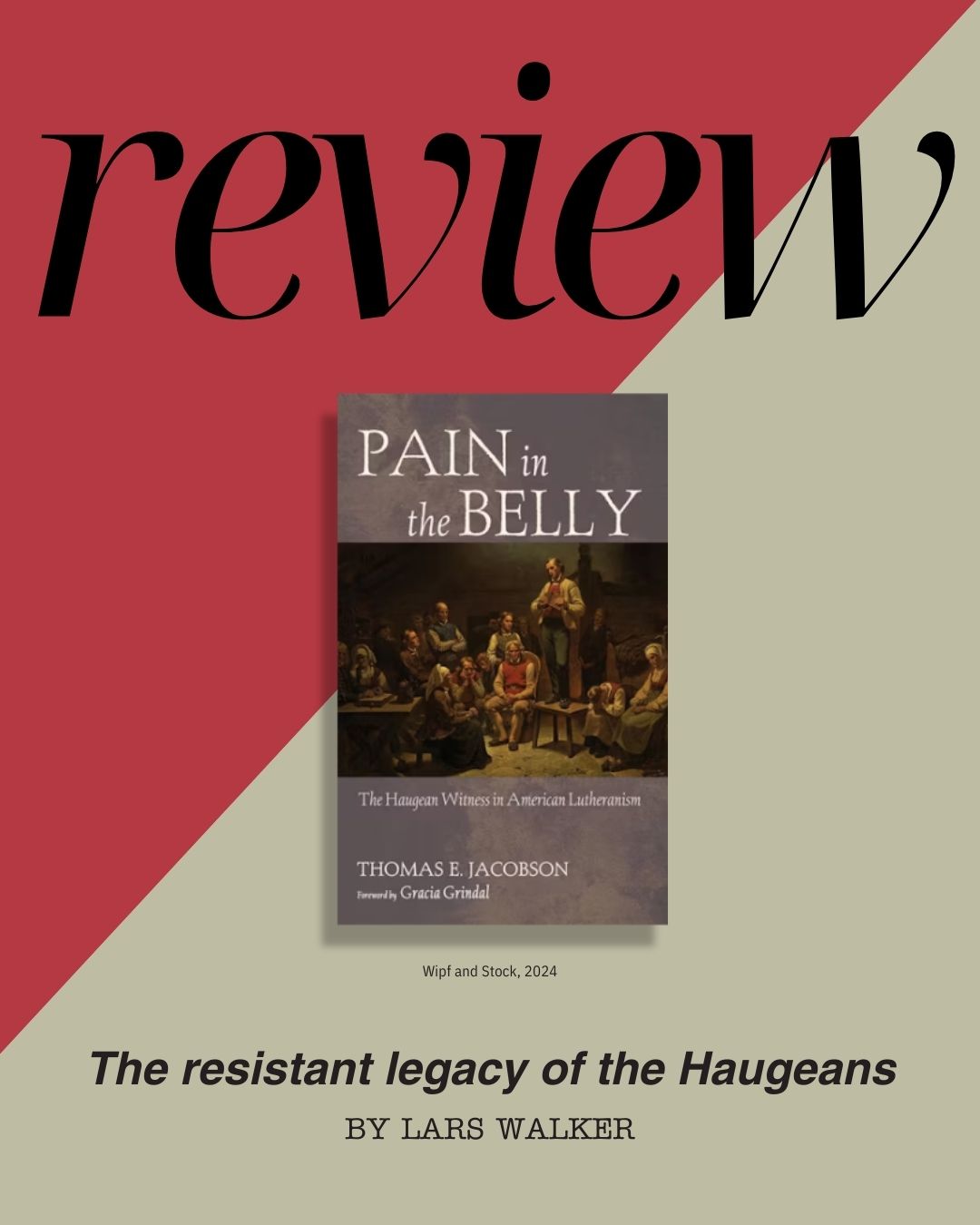
3 minute read
The resistant legacy of the Haugeans
By Lars Walker
This was quite a long book, but I read it pretty quickly. Because it fascinated me. It’s about matters near to my own heart and history.
When the old Hauge Synod, a small NorwegianLutheran church group, entered into a merger with other Lutheran groups in 1917, someone from another synod expressed satisfaction that they’d now be able to “gobble up” the Haugeans through sheer weight of numbers. Someone else replied that that might be so, but it was likely to give them pains in the belly. That’s the inspiration for the title of Pain in the Belly: The Haugean Witness in American Lutheranism by Thomas E. Jacobson.
The Haugeans are my people. They were a movement of lay evangelism and pietism originating in Norway around the turn of the 19th century. They never left the state church in Norway but operated as an independent movement within it. When Norwegians began immigrating to America in the mid-1800s, the Haugeans, having no state church to react against, eventually gathered themselves into a loosely organized church body of their own (the first Norwegian Lutheran church body in America), which survived (with some splits) up until 1917, when they entered a merger with other Norwegian American Lutheran groups (for reasons that aren’t entirely clear in the record).
Author Jacobson spends about half his book explaining this story to the reader. The information is available elsewhere but is necessary to set the stage for the general reader. The other half of the book involves more original scholarship, as Jacobson has gone through (sometimes meager) records to construct an account of how the Haugeans returned, in a sense, to their original situation, operating as an independent force within a larger church body—preaching, teaching, doing good works, and agitating for a more devoted Christian life.
I read with great interest, as almost every page mentioned places I know and institutions I’m familiar with. Also, people whose children I’ve met—or whose preaching I’ve heard. A few I’ve met personally over the years. (I myself am cited as a source, by virtue of the booklet, Standing Fast in Freedom, which I wrote for the AFLC.)
First of all, I want to say that the book is very well written. Jacobson, a pastor of the North American Lutheran Church, has a clear, lively style, most welcome in a historian. He is also admirably even-handed in dealing with controversies, in spite of a tendency to refer to any preaching involving law and morality as “dark and legalistic.”
Pain in the Belly, alas, is probably unlikely to attract a large audience. But members of the AFLC, especially those interested in the contentious early history of the Lutheran Free Church, which plays a peripheral role in the story, will find much of interest here.
Walker is a member of Grace Free Lutheran, Maple Grove, Minn.










